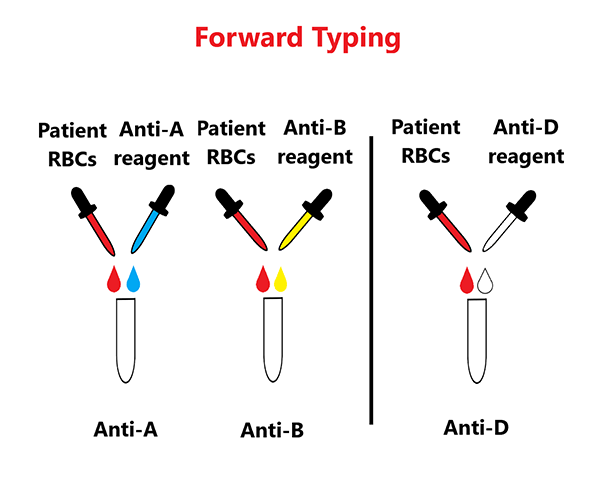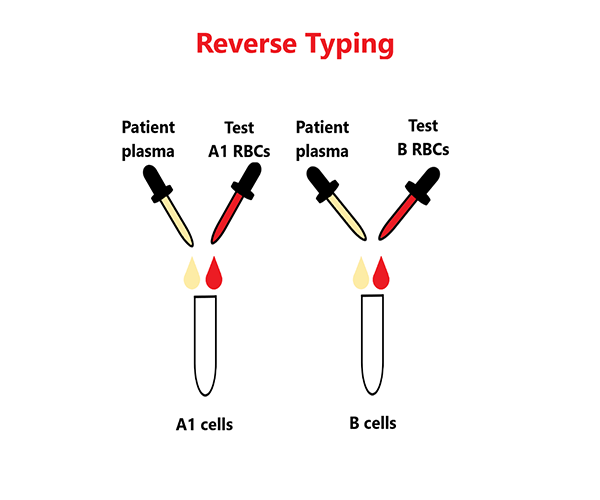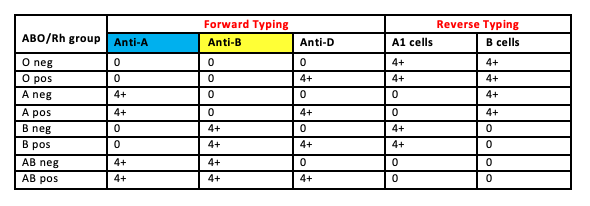ABO Typing
To determine the ABO “group” or “type” of an individual requires characterizing both the A and B antigen expression of the patient’s red blood cells (“forward typing”) and the presence of anti-A and anti-B antibodies in their plasma (“reverse typing”). Forward typing is performed with monoclonal typing sera, whereas reverse typing is performed with commercial preparations of type A and B erythrocytes (see Figures below).
Before a patient’s ABO type can be determined, concordance between their forward and reverse typing results must be demonstrated. For example, a type A individual must show agglutination with anti-A typing sera but not anti-B typing sera, and their plasma must agglutinate B typing cells but not type A cells (see Table below).
A failure to show concordance between the forward and reverse typing is known as an ABO typing discrepancy and must be explained before the ABO type can be interpreted (see supplemental information section for additional details).


Summary of ABO and RhD determination:

Next page: RhD antigen
